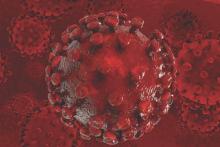Rates of HIV infection in the United Kingdom could drop by 44% this decade if just a quarter of high-risk men who have sex with men receive pre-exposure prophylaxis, regular HIV testing, and early treatment, according to investigators.
“Our findings show that PrEP can be highly effective against HIV transmission at the population level, and could outperform other interventions at the same level of program coverage,” reported Dr. Narat Punyacharoensin of the London School of Hygiene and Tropical Medicine and his associates. The study was published online Jan. 13 in The Lancet HIV.
The incidence of HIV infection in the United Kingdom rose slightly in 2014, and shows no signs of reversing course. Among 104,000 UK residents living with HIV, about 43% are MSM, the researchers noted. After fitting a mathematical model with surveillance and behavioral data, they estimated the effects of seven HIV interventions targeting MSM, including expanded testing, test-and-treat programs, antiretroviral PrEP, and measures to reduce sexual partners and unprotected anal intercourse (Lancet HIV. 2016 Jan 13. doi:10.1016/S2352-3018[15]00056-9).
If nothing is done, the UK can expect about 17,000 new HIV infections by 2020, the model showed. But offering just 25% of high-risk MSM PrEP along with regular HIV testing and early treatment would prevent 7,399 HIV infections by 2020 (interquartile range, 5,587-9,813), or about 44% of the total incidence (IQR, 33-58).
“An increase in unsafe sex or sexual partners to 50% or more could substantially reduce the effect of interventions, but is unlikely to negate the prevention benefit completely,” the investigators added. “Pre-exposure prophylaxis could prevent a large number of new HIV infections if other key strategies, including HIV testing and treatment, are simultaneously expanded and improved. Without PrEP, HIV incidence in MSM in the UK is unlikely to decrease substantially by the end of this decade.”
The Health Protection Agency (now Public Health England), the Medical Research Council, and the Bill and Melinda Gates Foundation funded the work. The investigators had no disclosures.


